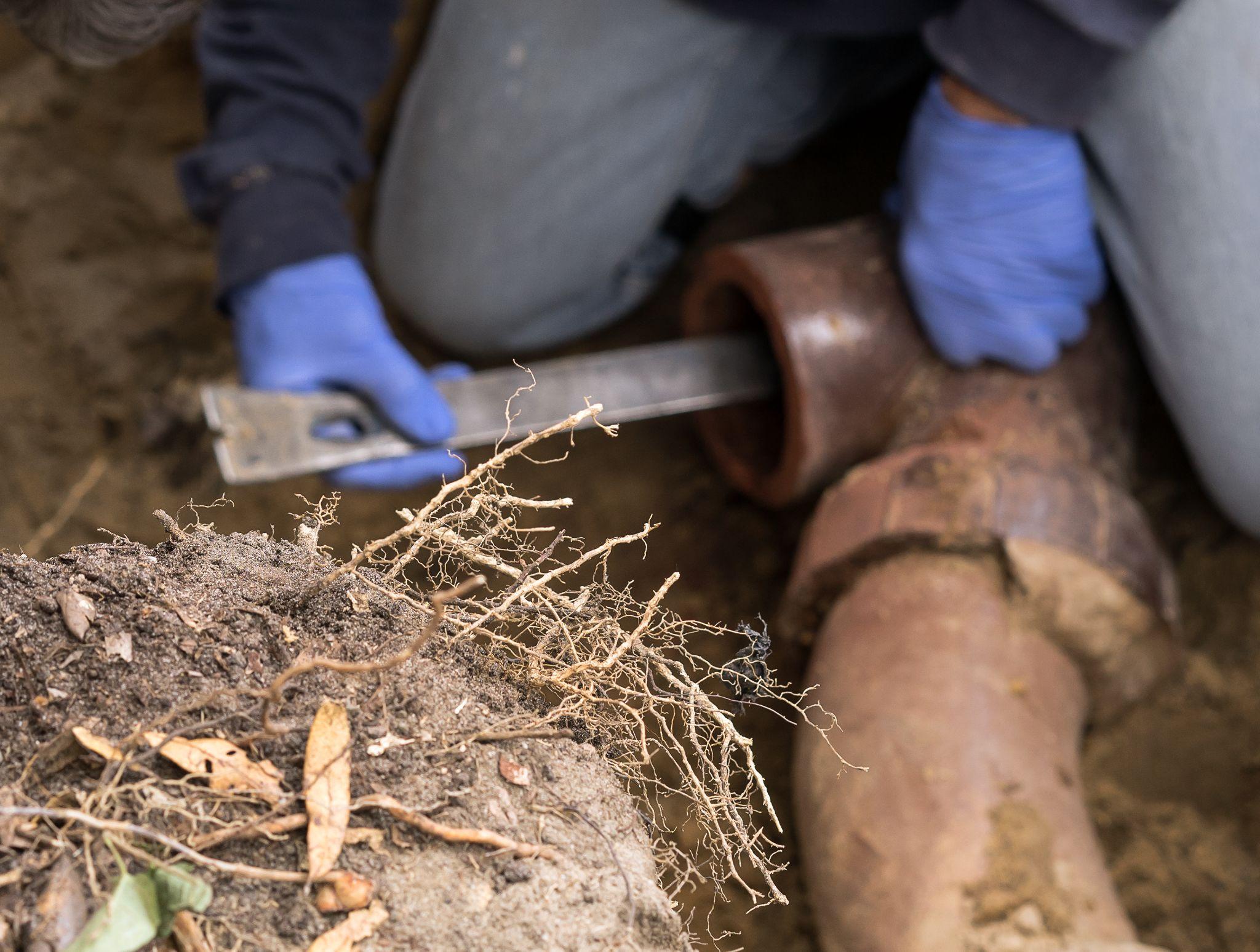Keeping Tree Roots From Invading Your Sewer Lines

Trees add beauty and curb appeal to your yard, but even one can damage your sewer system. If roots reach your main line, you could face costly sewer line repair (and a major headache). Sewer pipes are a gold mine for tree roots because they carry the water and nutrients trees need to grow.
Even the tiniest crack or leak in a pipe can let roots in, where they spread and cause serious damage. The good news is there are ways to preserve the beauty of your trees while helping avoid root invasion in your pipes. Below, we’ll cover how to spot problems early, remove intrusions safely, and prevent them from returning.
Know Where Your Sewer Lines Are Located
Before planting new trees or making landscaping changes, find out where your sewer lines are located.
Ways to locate your lines:
- Look for cleanout caps in your yard
- Call your local sewer department to mark the lines
- Ask a licensed plumber for mapping and inspection services
If a tree is already close to your line, schedule a camera inspection. This allows a plumber to detect roots in sewer lines before they cause major clogs or backups.
Warning signs of root intrusion:
- Slow drains or frequent clogs
- Gurgling sounds from toilets or sinks
- Unpleasant odors from drains
Roots in drain pipes can quickly spread through the entire system. Acting early is the best way to avoid expensive sewer repair work later.
Removing Tree Roots and Repairing Pipes

If inspection confirms roots in pipes, the next step is safe removal. This should be done by a professional plumber to avoid further damage to the line or the tree.
Common removal methods include:
- Mechanical cutting: A specialized auger cuts through roots in plumbing lines without damaging the rest of the pipe. This method is effective for immediate blockage relief and can be combined with other treatments to slow regrowth.
- Chemical treatment: Foaming herbicides coat the inside of the pipe to stop root growth and prevent new roots from entering. When applied correctly by a professional, these treatments can protect the line for several years without harming the tree.
- Hydro jetting: High-pressure water blasts away any remaining debris after root cutting, restoring full pipe diameter. This method also helps remove grease, scale, and other buildup that could catch future root growth.
After removing the roots from drain pipes, your plumber may recommend repairs. This can include patching small cracks, trenchless lining, or full sewer pipe repair.
Some homeowners ask how to stop tree root growth without damaging the tree. In-pipe treatments applied by a professional can slow regrowth for several years while keeping the tree healthy.
Prevention Tips for Tree Roots in Pipes
Preventative steps can reduce the risk of damage to sewer lines in the future.
- Plant smart. Choose smaller, slow-growing trees that work well in Central Texas, such as Flowering Dogwood, Paperbark Maple, or native Bald Cypress. Avoid fast-growing species with aggressive roots like Silver Maple, Weeping Willow, Sweetgum, Sycamore, or Bradford Pear.
- Install barriers. Use metal, wood, or heavy-duty plastic barriers buried vertically between trees and sewer lines. Ensure barriers extend deeper than the pipe to redirect roots.
- Schedule regular inspections. Annual checkups help spot tree roots in pipes before they block the line. Professional cleanings can extend the lifespan of your sewer system.
Knowing how to remove roots from sewer lines early is far less costly than replacing the entire line. If you have a tree planted near the underground pipe that connects your home to the city sewer system, and you notice slow drains, it may be roots inside the pipe causing the blockage.
If roots in plumbing are a recurring problem, discuss long-term options with your plumber. They can advise on how to get rid of roots in sewer lines and keep them from returning, as well as options for removing roots from drain pipes permanently.
FAQs
How do roots get into pipes?
Roots seek moisture and nutrients. If a pipe has a small crack or loose joint, tree roots in drain pipes can enter, grow, and eventually break the line.
How do you stop tree roots from growing in sewer lines?
Install root barriers during planting, schedule yearly inspections, and apply foaming root killers inside the line to keep roots in sewer systems from returning.
Will insurance cover tree roots in a sewer line?
Most homeowners insurance policies do not cover damage from tree roots in pipes because it’s considered preventable maintenance. Review your policy for exact coverage.
Protect Your Sewer Lines Today

Roots inside your sewer lines can lead to blockages, backups, and expensive repairs. If you need to remove roots from sewer lines, repair sewer lines, or schedule a preventive inspection, Christianson Air Conditioning & Plumbing can help. We provide expert sewer system repair for homeowners across Central Texas.
Tags: Emergency plumbing roots, Root invasion, Sewer line roots



Sorry, comments for this entry are closed at this time.